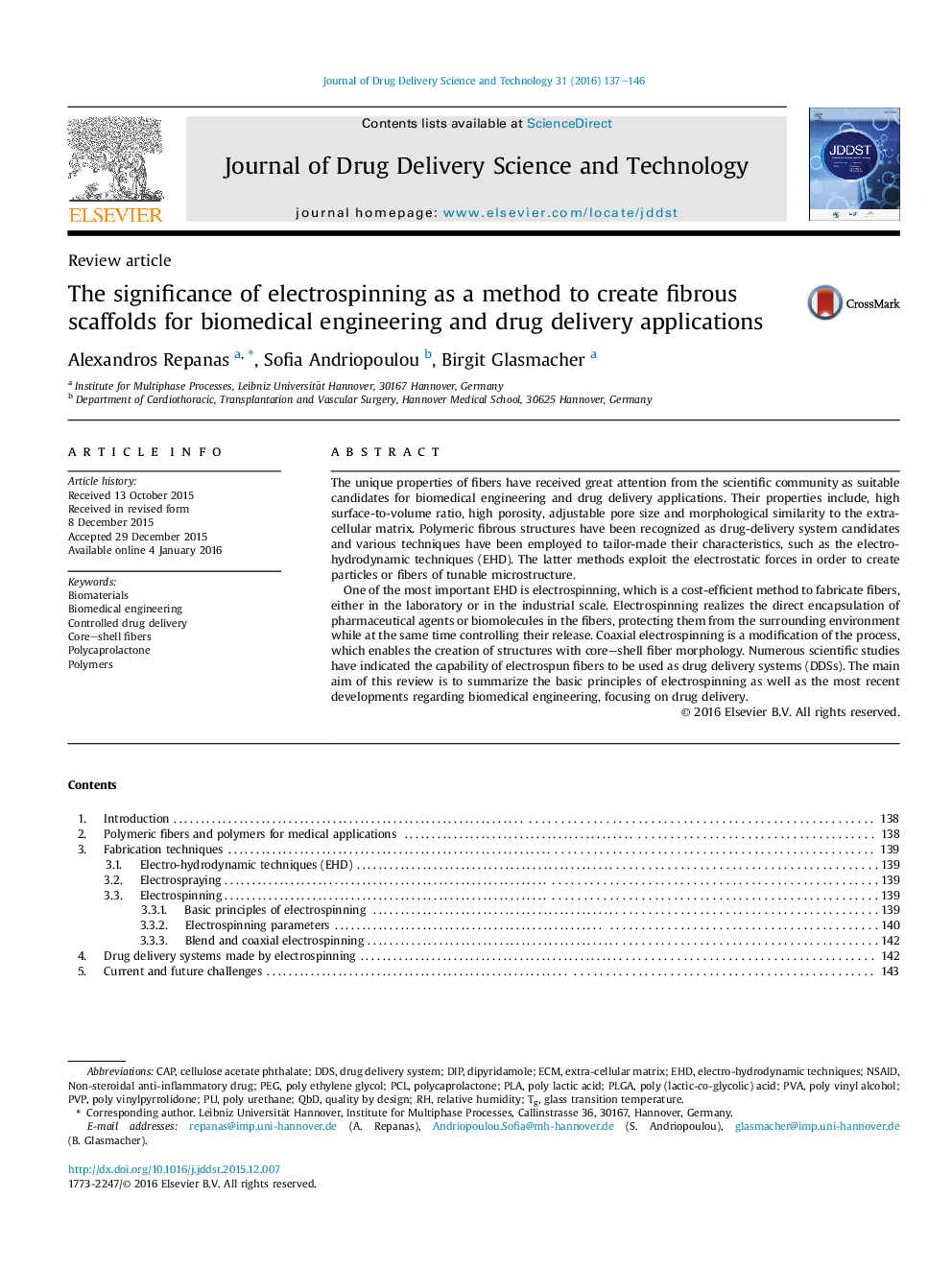| کد مقاله | کد نشریه | سال انتشار | مقاله انگلیسی | نسخه تمام متن |
|---|---|---|---|---|
| 2483072 | 1556472 | 2016 | 10 صفحه PDF | دانلود رایگان |

The unique properties of fibers have received great attention from the scientific community as suitable candidates for biomedical engineering and drug delivery applications. Their properties include, high surface-to-volume ratio, high porosity, adjustable pore size and morphological similarity to the extracellular matrix. Polymeric fibrous structures have been recognized as drug-delivery system candidates and various techniques have been employed to tailor-made their characteristics, such as the electro-hydrodynamic techniques (EHD). The latter methods exploit the electrostatic forces in order to create particles or fibers of tunable microstructure.One of the most important EHD is electrospinning, which is a cost-efficient method to fabricate fibers, either in the laboratory or in the industrial scale. Electrospinning realizes the direct encapsulation of pharmaceutical agents or biomolecules in the fibers, protecting them from the surrounding environment while at the same time controlling their release. Coaxial electrospinning is a modification of the process, which enables the creation of structures with core–shell fiber morphology. Numerous scientific studies have indicated the capability of electrospun fibers to be used as drug delivery systems (DDSs). The main aim of this review is to summarize the basic principles of electrospinning as well as the most recent developments regarding biomedical engineering, focusing on drug delivery.
Figure optionsDownload as PowerPoint slide
Journal: Journal of Drug Delivery Science and Technology - Volume 31, February 2016, Pages 137–146